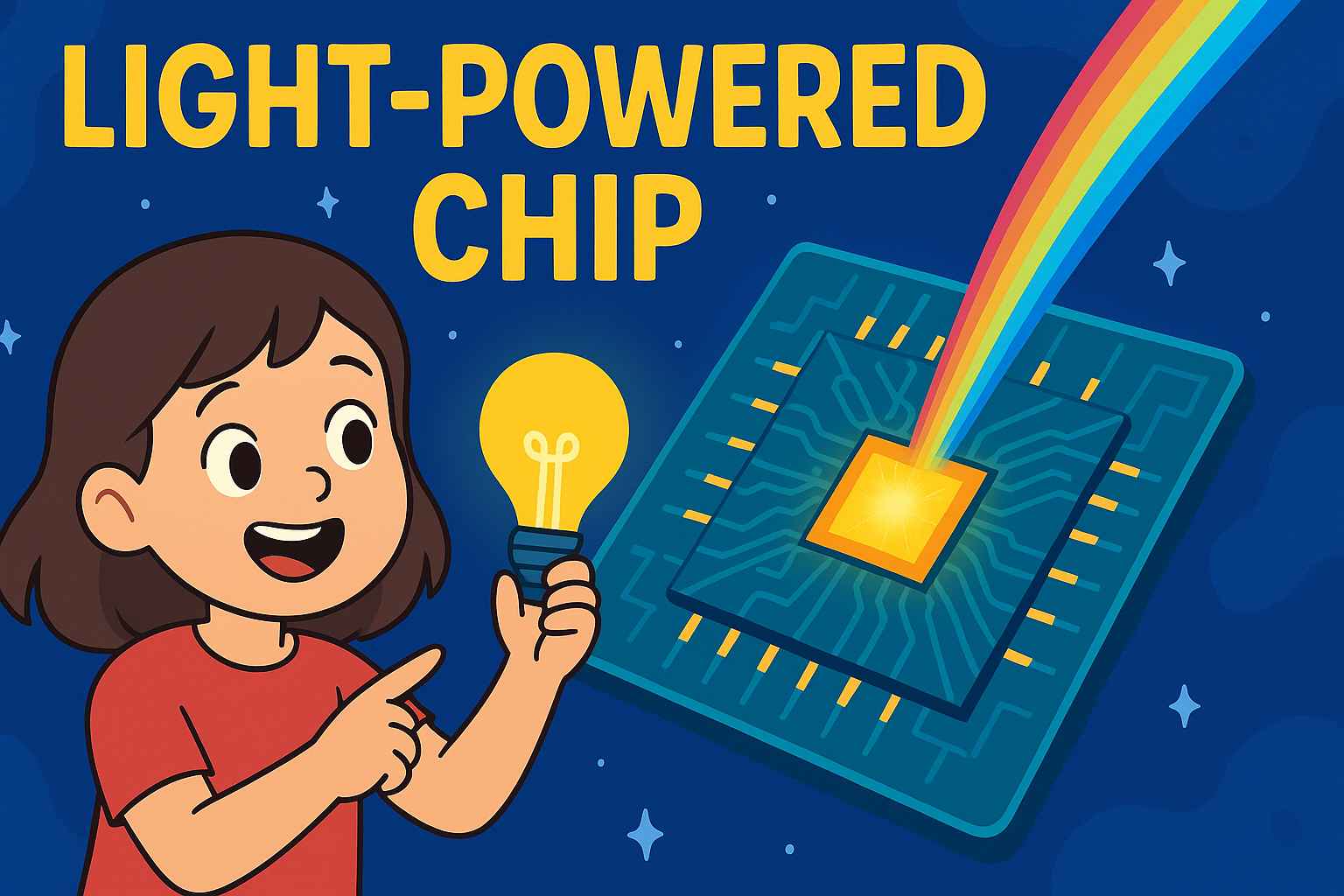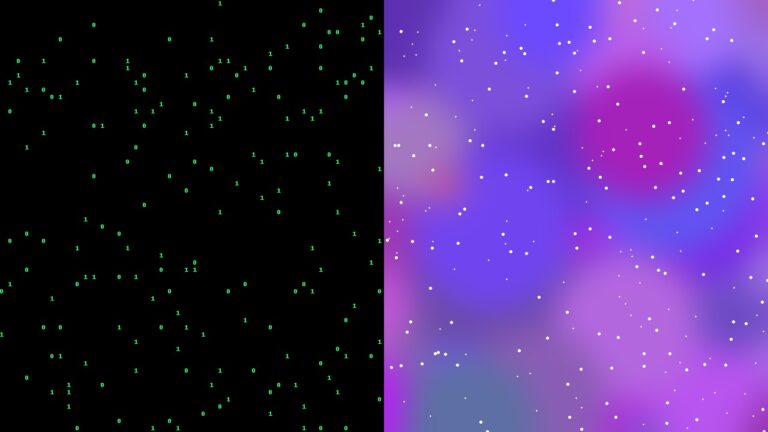
Can computers think with light? Scientists at the University of Florida have created a chip that uses laser beams and tiny lenses to perform AI tasks with almost no energy. Learn how this breakthrough could change the future of technology—explained in a fun, easy way for kids!
🌟 Imagine a Computer That Thinks with Light!
Have you ever noticed how fast computers have become? They recognize faces in photos, translate languages, suggest videos you might like, and even talk back to you with smart voice assistants. All of this is powered by Artificial Intelligence (AI). But here’s the twist—AI is a bit like a super-hungry robot that eats up enormous amounts of electricity to keep thinking and learning.
Now imagine if, instead of electricity, we could power AI with light—like using tiny lasers to do the math inside a computer chip. Sounds like science fiction, right? Well, scientists at the University of Florida have just made it real! They’ve created a light-powered chip that can make AI 100 times more efficient. That’s like teaching your computer to run marathons on just a sip of juice.
💡 Why Is AI So Hungry for Energy?
Think of AI as a detective. To solve mysteries—like recognizing a cat in a picture or understanding your voice—it has to look for patterns. These pattern searches involve a special kind of math called convolutions. Imagine sliding a magnifying glass across a picture, checking every detail carefully. That’s basically what AI does thousands, even millions, of times. No wonder it gets tired and uses so much electricity!
Right now, all this pattern-spotting is done using regular electronic chips. They’re fast, but also energy-guzzlers. If we keep growing AI at this speed, the electricity bill for the world’s computers will be sky-high. That’s where the new light-powered chip comes in.
🔬 Chips That Think with Lasers
The new chip isn’t your everyday microchip. Instead of just using electricity, it mixes light and electronics to get the job done. Here’s how it works:
- Data Becomes Light – The chip first turns computer data into beams of laser light.
- Tiny Super-Lenses – The light passes through microscopic lenses called Fresnel lenses. Fun fact: Fresnel lenses are like the flat, super-thin cousins of lighthouse lenses, and these ones are narrower than a single human hair!
- Magic Transformation – As the light travels through, the lenses automatically perform the tough math problems (the convolutions).
- Back to Digital – The results are turned back into electronic signals so the AI can keep working.
It’s like the chip has its own built-in rainbow laser calculator.
🎨 Light of Many Colors = Multitasking Superpower
Here’s where it gets even cooler: the chip doesn’t just use one color of laser light. It can shine different colors (wavelengths) at the same time, each carrying separate information. This trick is called wavelength multiplexing. Think of it like a busy highway where each lane is painted a different color, and cars (the data) zoom by without crashing into each other. That means the chip can multitask—handling many streams of information at once!
🚀 How Good Is It?
When scientists tested the chip, it was asked to recognize handwritten numbers (like a teacher showing students messy notes). The chip scored 98% accuracy, which is almost the same as today’s top electronic chips. But here’s the kicker—it did this while using almost no energy. That’s like solving a tough math test while barely lifting a pencil!
🧠 Why Does This Matter?
AI is everywhere—from your phone’s camera to medical scanners that help doctors. But as AI grows, it needs greener, faster ways to think. This new chip could:
- Save huge amounts of electricity 🌍
- Make AI faster and cheaper ⚡
- Help build futuristic tech like self-driving cars, robot helpers, and smart cities
And because it’s made using normal chip-making techniques, companies like NVIDIA (the big name in AI chips) might be able to add this tech to future computers soon.
🌈 The Future: Light-Powered Brains?
This is the first time anyone has ever put this kind of light-based math directly on a chip and used it for AI. The lead scientist, Volker J. Sorger, believes that in the near future, all AI chips will include optical computing. In other words, your phone or laptop could soon think with lasers!
🌟 Takeaway Thought
Next time you switch on a light, imagine that tiny beams of light might one day help computers learn, talk, and even dream. If electricity was the past of computing, light could be its shining future.
So, here’s a question to spark your imagination:
👉 If computers can think with light, what do you think we humans might invent when we learn to fully harness the power of light?
✨ And that’s the story of how a chip that thinks with light could change the way the world does AI!
🔎 Quick Quiz: Can You Shine Bright with Light-Powered Chips?
1. Why do regular AI chips use so much energy?
a) Because they love pizza 🍕
b) Because they perform millions of pattern-spotting tasks (convolutions) 🔍
c) Because they need to recharge their batteries 🔋
2. What special kind of lenses are etched onto the new chip?
a) Sunglasses 🕶️
b) Fresnel lenses 🔦
c) Magnifying glasses 🔍
3. What trick lets the chip process multiple streams of data at once?
a) Jumping jacks 🤸
b) Wavelength multiplexing 🌈
c) Laser tag 🔫
4. How accurate was the chip at recognizing handwritten numbers?
a) 50%
b) 75%
c) About 98%
✅ Answers: 1-b, 2-b, 3-b, 4-c






